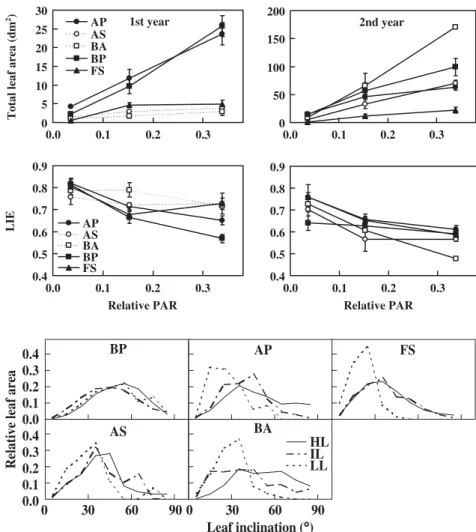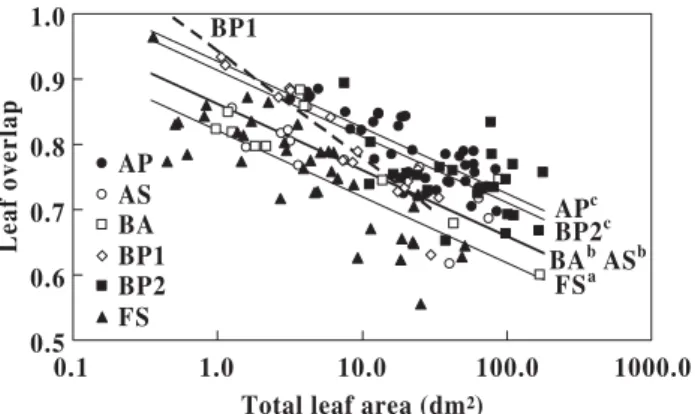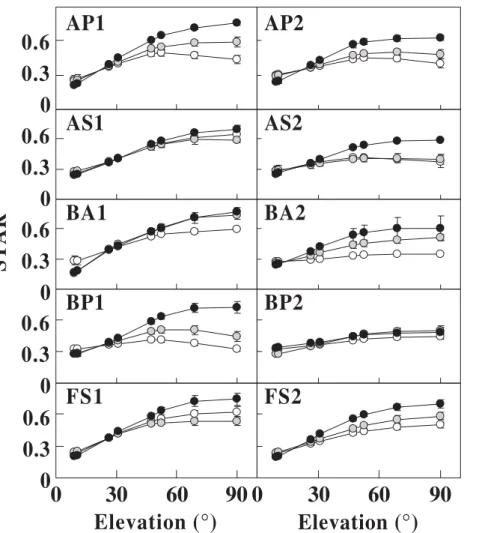Does shade improve light interception efficiency? A comparison among seedling from shade-tolerant and -intolerant temperate deciduous tree species
Texte intégral
Figure




Documents relatifs
To (visually) assess the conservation of growth rankings among species at different light conditions, we computed average growth for species with $100 individuals over the range of
in accordance with AMAPMOD/MTG syntax (Godin & Caraglio, 1998), (c) topological and geometrical plant reconstruction with Xplo, (d) stand reconstruction with Simeo, (e)
& Aims By examining the sun/shade leaf differentiation in leaf morphology, foliar nitrogen and photosynthetic capacity in five temperate tree species of different successional
To assemble two parts according to the standard in this RFC, it is RECOM- MENDED that (1) the prefix part be digested with EcoRI and SpeI, (2) the suffix part be digested with XbaI
Factors controlling stemwood production at the end of the rotation are highly important to explain final biomass between
• Coffee yield could be impacted by 12% reduction under future climate due to T°C without full compensation by CO2 : adjusting shade will be crucial then. • Models should allow
In this paper, we have presented the results of panoramic wide-field optical imaging of a UV-selected galaxy redshift survey, with the aim of further investigating the nature of
Phenotypic criteria, morphological characteristics and genomic features of strain Marseille-P63248 led us to conclude that this strain is a new member of the Arcanobacterium genus.

